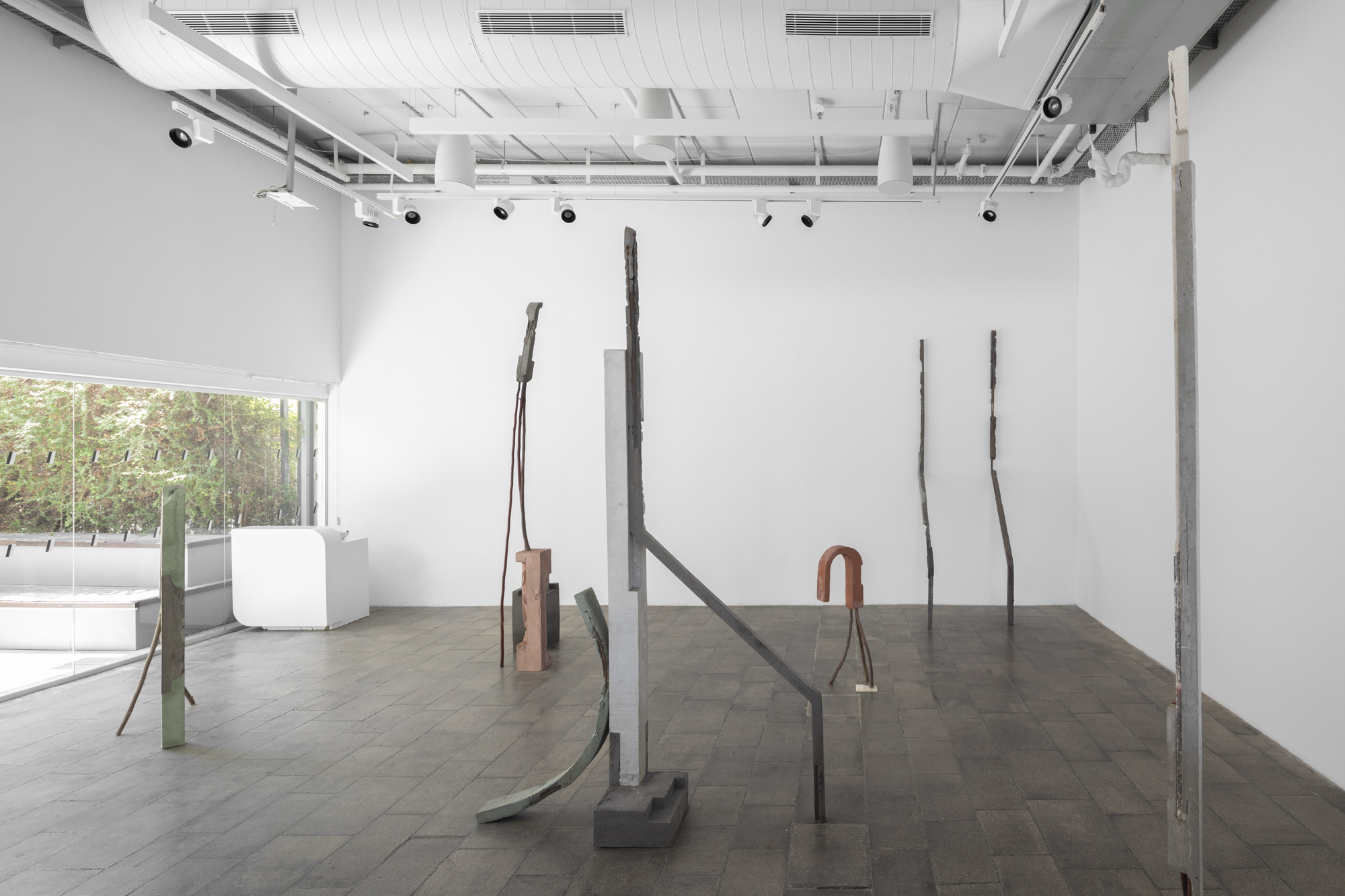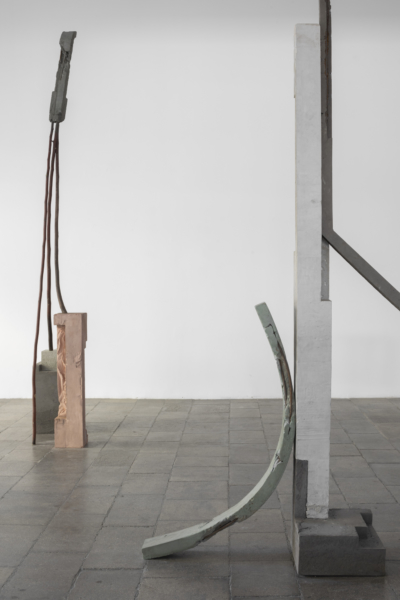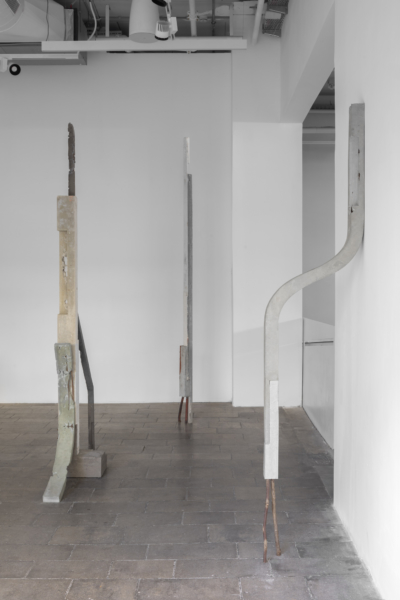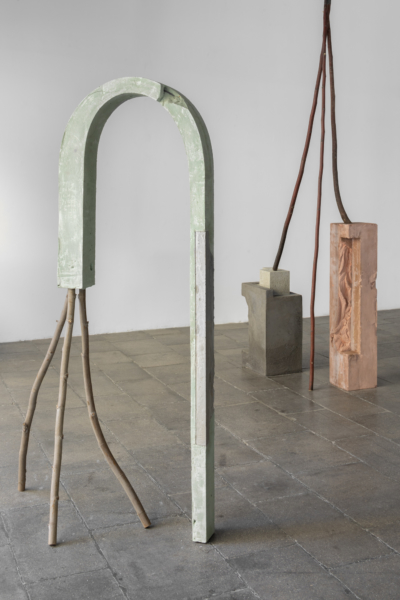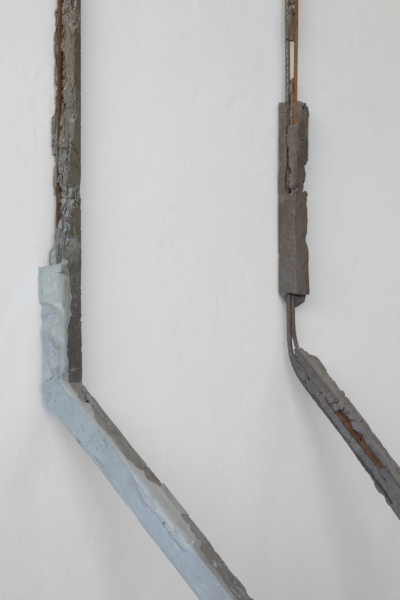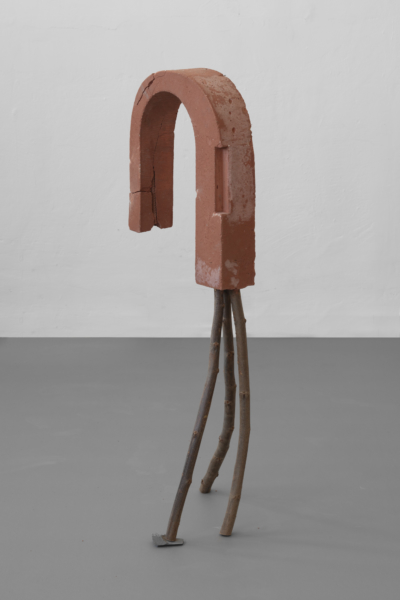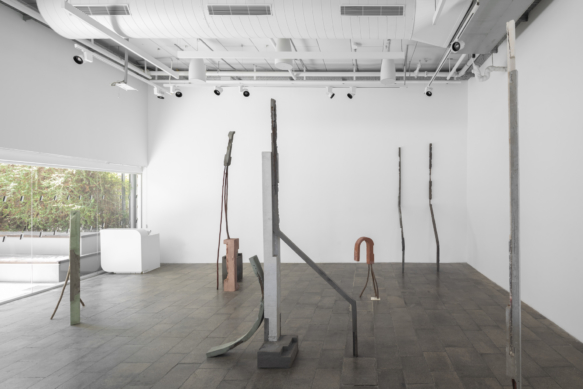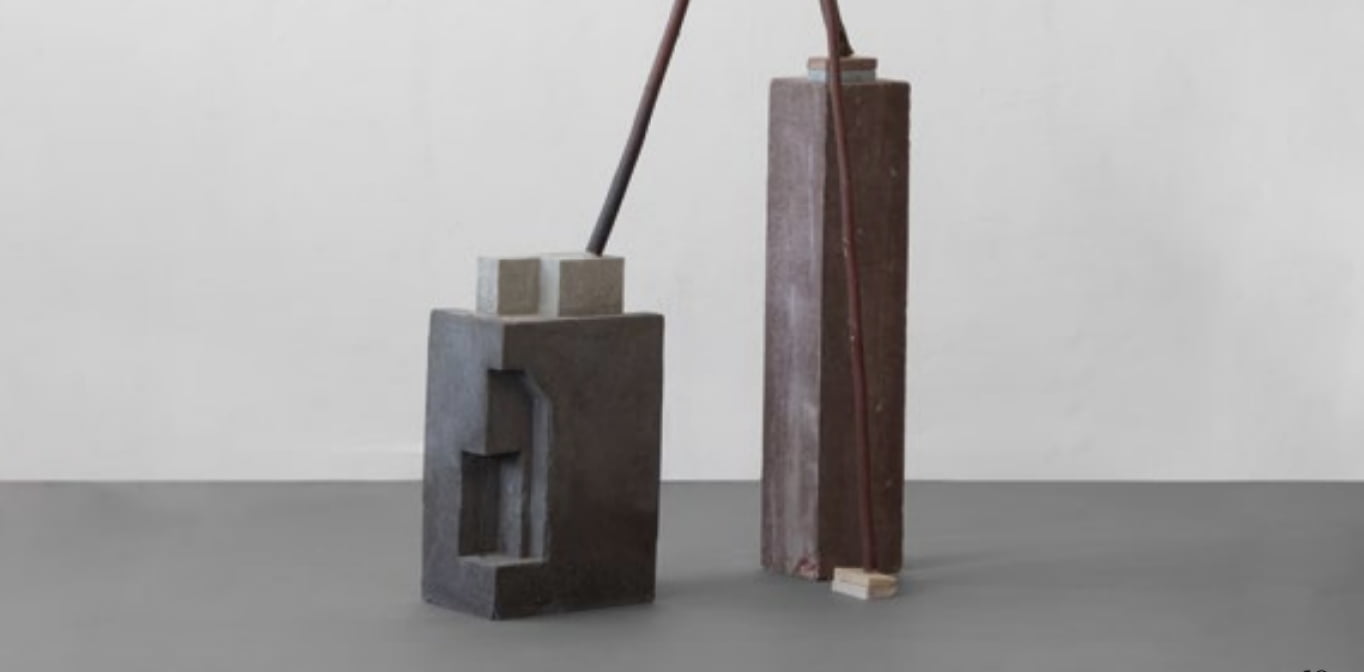The walls in Netai Halup’s studio are high, towering upward in off white, with drill holes here and there. Scarce furniture dot the paint-stained old terrazzo flooring: a table, shelves laden with iron rods. The north wall boasts large windows, and in the morning the sun bathes the studio with dazzling light, that grows brighter during the day. There is one office chair that rolls through the different sections of the studio, and in the middle—an empty space.
The empty space assumes alternating roles. One moment it is a construction site: dirty wooden molds stand in the center, ready for casting; sacks of cement are poured into a black tub, buckets of water are mixed in, iron rebar and pigments are introduced to the concrete mix, formulas are scattered on sheets of paper, weights are calculated. In another moment it is an archive: geometric concrete objects-bodies in pastel shades are taken off the shelves, sorted into series, and lined on the floor. And under a different light, the studio takes on the appearance of a rehearsal room, just before the curtain rises: an object at the far end of the space is lifted and moved to the center; an adjacent object leans against another similar object, probing its grip; one element climbs high on another unit; a concrete square placed on Persian lilac-wood legs exercises stability; a coin balances a swinging rectangle.
In the initial dialogue between Halup and his bodies of work, the artist plays the role of creator. He creates them from scratch, drawing and planning their form and structure, connecting materials and quantities via internal movement. Flexibility is an important component in the work’s construction, but his practice is underlain by the knowledge that if miscalculated, the body will not be able to bear its elements and form. To release life from the material, the dosages must be accurate, but also surprising.
In the earliest story, the first man was composed of a corporeal substance—dust, and all the literary characters thereafter started as raw materials and received the spirit of life from their human creators: in the synagogue’s attic, a rabbi sculpts a golem in clay using holy letters; in the carpentry workshop, an old man carves a child in wood; in an old boarding house, a doctor mixes body parts and chemicals to create a monster.
By the same token, Halup creates familiar geometric elements characterized by heavy materiality, and only later, once installed, does he breathe life into them. The concrete, which is associated with weight, non-elasticity, and massiveness, masquerades, acquiring lightness and a sense of hovering in the...
Read More 
